Manchester has existed as a settlement for well over a millennium, since the Romans established a fort there around 79AD. The market town began to be transformed into an industrial powerhouse from the late 18th century, with the arrival of the Bridgewater Canal and the rise of the cotton industry. The population of Manchester in 1773 was over 22,400 persons, by 1811 it had risen to 89,000 and by 1851 it was over 303,300 persons.
These people lived, worked and died in Manchester. But where were they buried? During the eighteenth and nineteenth centuries there were numerous churches, chapels and grave yards catering to a range of religious faiths. Here are three forgotten burial sites in modern-day Manchester, where you might not realise the dead are literally beneath your feet!
St. Ann’s Church (St. Ann’s Square)
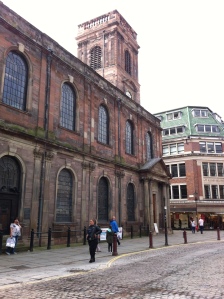
Source: Own Photograph
St. Ann’s Church is one of the city’s oldest, surviving religious buildings. It was built in 1712 and it is still worshipped in today. It stands in the heart of the city centre, in front of it is St. Ann’s Square and behind it is King Street.

The Church had its own graveyard surrounding the rear of the building. This site was used for burials between 1712-1854, when they were stopped due to the Burial Acts which prevented burials in already overcrowded grave yards and instead the Act established formal cemeteries.
The graveyard was partially cleared in 1842 and the majority of the gravestones were removed in 1892, although a few are still visible. The former church yard was paved over and landscaped and today is part of the St. Ann’s Square development.
St. Peter’s Church (St. Peter’s Square)
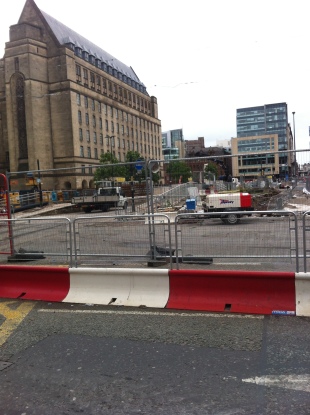
Today St. Peter’s Square is home to the metrolink tram stop, outside the Central Library, the Midland Hotel and the Town Hall extension. As you can see from the photograph above, in 2015 the area was a building site as the platforms were being extended. From 1788 to 1906, St. Peter’s Church stood there and in 1819 the area was on the very edge of St. Peter’s Field and thus the Peterloo Massacre occurred around it. The Church was demolished in 1907.
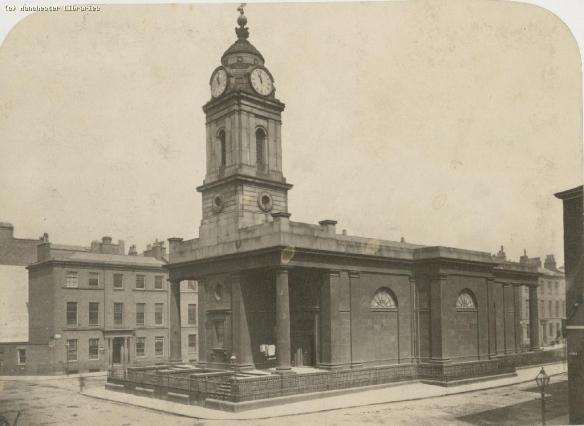
A graveyard was never established at St. Peter’s, instead burials were held in vaults underneath the Church, registers exist from 1796 – 1866. The fact these were vaults suggests that those buried there were some of Manchester’s wealthier residents. There are at least 218 graves there, if not more. The vaults are still there today and were recently re-discovered by the workmen extending the metrolink (they also uncovered 200 graves outside the Cross Street Unitarian Chapel too). The vaults will be re-sealed and there are plans to re-erect the memorial cross that once stood there marking the site of the Church.
All Saints Church (Grosvenor Square, Oxford Road)
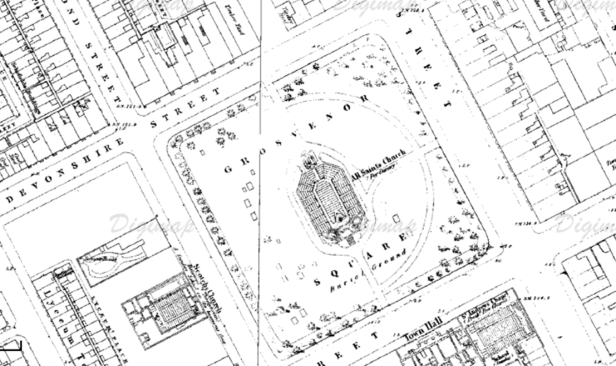
All Saints Church was founded in 1820 and only demolished in 1949 after it was damaged by bombing during the Second World War. The grounds surrounding the Church were the graveyard. As early as 1848, they were overcrowded with burials and an “offensive effluvia” was being emitted. The last burial took place there in 1881.
In 1934 the Manchester Corporation came into ownership of the site and they laid the gravestones flat and buried them under three feet of dirt. During the post-war years, part of the former graveyard was even used as a children’s playground!
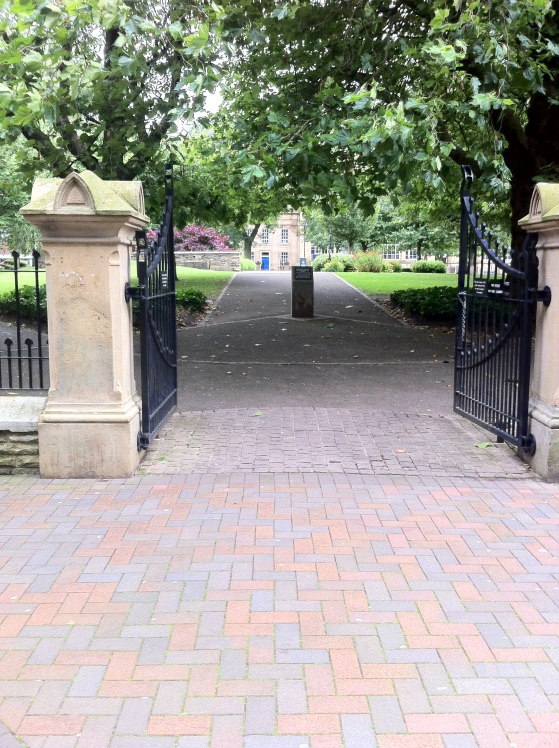
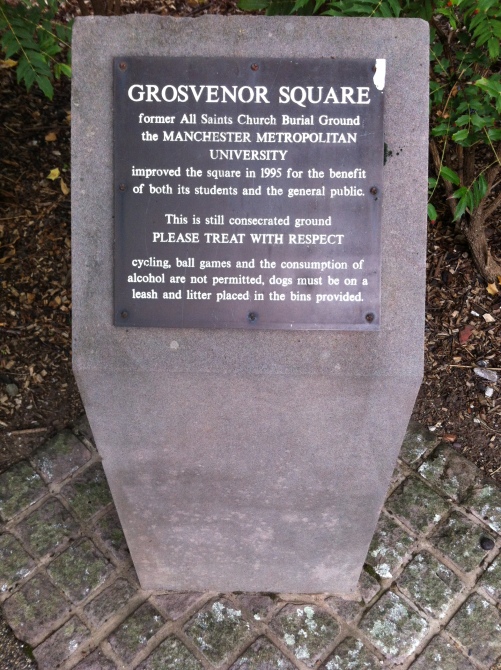
Today the site is owned and maintained by Manchester Metropolitan University, and there is a plaque erected to let people know that the site is still consecrated ground. As a recent graduate, I can say the area is extremely popular with students, especially in summer. I wonder how many realise that they’re eating picnics or sunbathing on top of the remains of around 16,000 people (of which 2562 names can be found online).
Researched and Written by Thomas McGrath
~
Enjoy what you’ve read? Each article is the result of hours of research and writing. If you like, please consider supporting this blog by ‘buying me a coffee’ over on Ko-Fi! https://ko-fi.com/thomasmcgrath
Sources:
– Alan Kidd Manchester A History , 4th edition (Lancaster: Carnegie Publishing Ltd, 2011)
– Burial Records http://www.lan-opc.org.uk/Manchester/index.html
– http://images.manchester.gov.uk
– http://digimap.edina.ac.uk/
– http://www.mlfhs.org.uk/data/BurialGrounds-Mar18-1.pdf
– http://www.manchester2002-uk.com/

Reblogged this on msamba.
LikeLike
Fascinating information on All Saints Church. I knew a priest who survived the bombing and went on to be our parish priest in Withington, but suffered from the trauma of the bombing. My Dad had an office nearby, next to Johnny Roadhouse’s music shop, a magnet for all local musicians, which was thriving in the 1960s and is still doing so. Well done, Thomas !
LikeLiked by 1 person